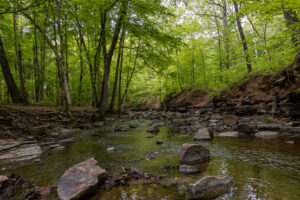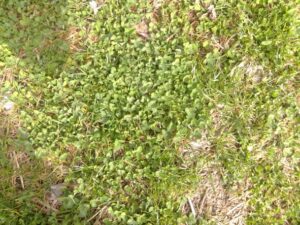By Gabe Ross, Farm Manager
In October we planted a couple of mixes of cover crops, to protect the soil here at Gallant Farm. While the soil isn’t dry enough to work yet, we can observe how these crops fared over the winter and what that means for the soil this spring.
Last year’s wheat field, which was planted into peas and radishes in August, is looking pretty good. The cover crop was completely winter killed but there seems to still be a good amount of dead plant material, like radish leaves and pea stems, on the surface and plenty of roots to hold the soil together. As you can see in the picture, bare soil is visible in some places which means it is unprotected from erosion. In the future, we may want to establish the cover crop a little earlier so we can increase the biomass to keep it covered. Or a grain crop like rye or triticale (a grain similar to wheat) could be added to the mix.
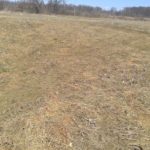
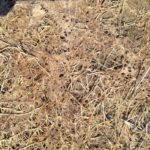
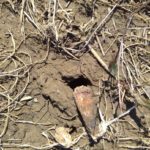
Notice the picture that shows how the radishes, when rotted, create holes that aerate the soil. When the radish was alive its deep tap root went to the bottom of the hole and brought nutrients up from the subsoil to make them available on the surface through decomposition.
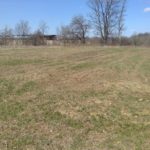
This field of annual rye grass stayed green all winter, but the radishes planted with it didn’t become well-established. I think this was due to late planting, done mid-September instead of August. (This is in contrast to the pea and radish field, planted in August). The beauty of the rye grass staying green all winter is that anytime the temperature got just above freezing the rye was photosynthesizing and converting any available sunlight into organic material to be tilled into the soil. Rye also has allelopathy, which means its chemical makeup discourages growth of weeds and other plants around it. This makes the field weed-free for spring and if tilled in doesn’t affect the following crop.
All these cover crops will be tilled into the soil with the coming spring. The pea and radish field will be planted into corn and the rye field into buckwheat.
As time goes on, we’ll continue to figure out how best to use cover crops to benefit Gallant Farm. We plan to experiment with other cover crop mixes in our garden, and plan to plant a winter killing cover crop in order to prepare a field for the establishment of a native prairie. We also would like to add more species to the mixes and take soil samples to compare “before and after cover crops”. Join us this spring at Gallant Farm and see first hand how these cover crops affect the soil and how you might be able to use them at home.




